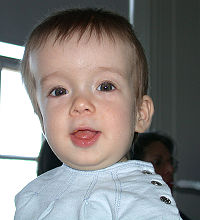
Photo from wikipedia
A number of pennate diatom genera typically have teratogenic deformations of their siliceous frustules due to the effects of environmental stress, such as high concentrations of heavy metals and low… Click to show full abstract
A number of pennate diatom genera typically have teratogenic deformations of their siliceous frustules due to the effects of environmental stress, such as high concentrations of heavy metals and low pH. However, the quantitative assessment of these deformations has rarely been applied. One species in which aberrations have frequently been reported is Eunotia bilunaris, which typically has bilaterally symmetric frustules with dorso-ventral differentiation. In this study, we aimed to illustrate the geometric morphometric analysis of symmetry as a tool for assessing the severity of teratogenic deformations. These were quantified by Procrustes superimposition of equidistant points placed along the valvar outlines in pairs of configurations based on their bilateral reflection symmetry. The shape deformations were mostly confined to central parts of the ventral outlines and were captured both by the symmetric and asymmetric subspaces of the variation. The amount of bilateral asymmetry in individual cells was negatively related to frustule size via the allometric power law relationship, illustrating that asymmetry increased in the asexual diminution series. The presented analysis provides a framework for the quantitative assessment of frustule deformations in eunotioid diatoms that can be used for the comparative scoring of teratogenic deviations among cells, populations, or species.
Journal Title: Symmetry
Year Published: 2022
Link to full text (if available)
Share on Social Media: Sign Up to like & get
recommendations!